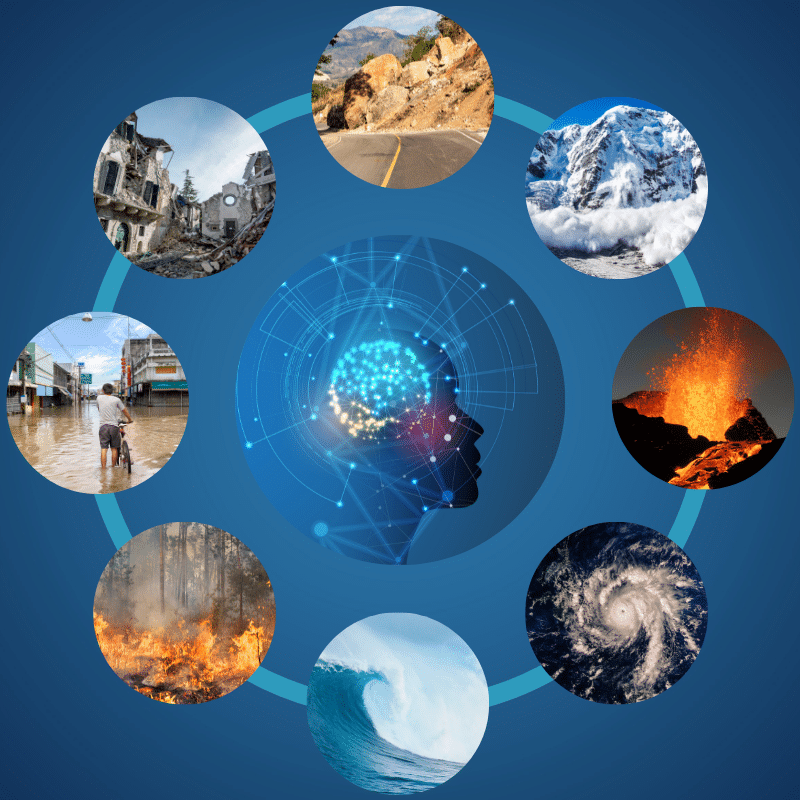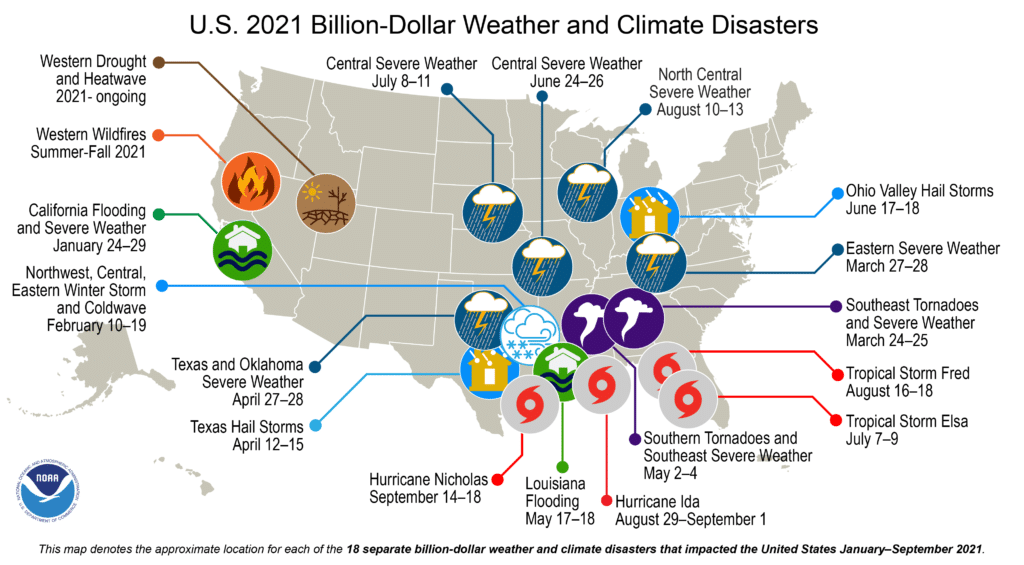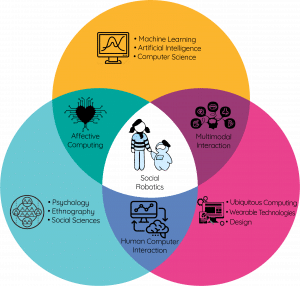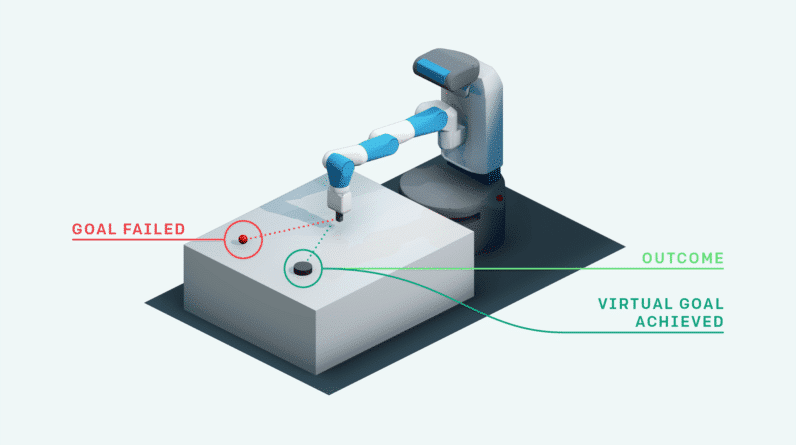In the world today, natural disasters can have devastating effects on communities and economies. However, with the advancements in artificial intelligence (AI), there is a growing potential to improve the prediction and response to these catastrophes. AI technologies such as machine learning and data analysis have the ability to process vast amounts of information quickly and accurately, enabling scientists and emergency responders to better understand the patterns and behaviors of natural disasters. This article explores the role of AI in natural disaster prediction and response, highlighting its potential to save lives and minimize the impact of these tragic events.

Understanding Natural Disasters
Natural disasters, such as hurricanes, earthquakes, floods, and wildfires, can have devastating effects on both human populations and the environment. Understanding the different types of natural disasters is crucial in order to effectively prepare for and respond to these events.
Types of natural disasters
There are various types of natural disasters, each with its own unique characteristics and impacts. Some common types include:
- Hurricanes: These powerful tropical storms can cause heavy rainfall, strong winds, storm surges, and widespread damage along coastlines.
- Earthquakes: Earthquakes occur when there is a sudden release of energy in the Earth’s crust, resulting in seismic waves that can cause shaking and destruction.
- Floods: Floods are caused by excessive rainfall, dam failures, or melting snow, leading to an overflow of water that can destroy homes, infrastructure, and agricultural lands.
- Wildfires: These uncontrolled fires are often fueled by dry conditions and strong winds, consuming vegetation, homes, and wildlife habitats.
- Tornadoes: Tornadoes are violent, rotating columns of air that can cause catastrophic damage to structures in their path.
Causes of natural disasters
Natural disasters can be caused by a combination of natural processes and human activities. Some factors that contribute to the occurrence of natural disasters include:
- Climate Change: Climate change can intensify extreme weather events, such as hurricanes and floods, due to rising sea levels, warmer temperatures, and altered precipitation patterns.
- Geological Processes: Earthquakes and volcanic eruptions are primarily caused by tectonic plate movements and activities along fault lines.
- Deforestation: Clearing forests for agriculture or urban development can increase the risk of landslides, soil erosion, and flash floods.
- Human Activities: Improper land management, urbanization, and the construction of infrastructure in vulnerable areas can exacerbate the impacts of natural disasters.
Impact of natural disasters
Natural disasters can have a wide range of impacts, affecting both human lives and the environment. Some common impacts include:
- Loss of Life and Injuries: Natural disasters can cause significant loss of life and injuries, often due to collapsing structures, flooding, or flying debris.
- Property Damage: Homes, buildings, infrastructure, and agricultural lands can be destroyed or severely damaged, leading to economic losses.
- Displacement and Migration: Natural disasters can force people to leave their homes and seek shelter elsewhere, resulting in temporary or permanent displacement.
- Environmental Degradation: Natural disasters can lead to the destruction of ecosystems, loss of biodiversity, and pollution of air, water, and soil.
The Importance of Prediction
In order to mitigate the impacts of natural disasters and protect vulnerable populations, accurate prediction is crucial. Predicting the occurrence, intensity, and duration of natural disasters allows for timely evacuation, resource allocation, and emergency planning.
Early warning systems
Early warning systems play a crucial role in disaster prediction and response. These systems rely on data from various sources, such as weather satellites, ground-based sensors, and historical records, to detect the early signs of a potential disaster. By alerting authorities and the public in advance, early warning systems provide valuable time for preparation and response.
Challenges in prediction
Despite advancements in technology, predicting natural disasters remains a complex task. Some challenges include:
- Uncertainty: Natural disasters are highly complex and can be influenced by numerous factors, making accurate predictions challenging.
- Limited Data: In some regions, data on historical disasters may be insufficient or unavailable, making it difficult to build accurate predictive models.
- Lack of Real-time Monitoring: Inaccessible or remote areas may lack the necessary infrastructure for real-time monitoring, hindering accurate predictions and timely response.
- Rapidly Changing Conditions: Some natural disasters, such as wildfires and flash floods, can evolve rapidly, making it challenging to predict their behavior accurately.
Role of AI in prediction
Artificial intelligence (AI) has emerged as a powerful tool to improve the accuracy and efficiency of natural disaster prediction. AI techniques, such as machine learning and data analysis, enable scientists to analyze vast amounts of complex data and identify patterns that can help predict the occurrence and severity of natural disasters.

AI Techniques for Prediction
AI techniques offer a range of tools that can enhance natural disaster prediction capabilities. Some key techniques include:
Machine learning algorithms
Machine learning algorithms enable computers to learn from historical data and make predictions or decisions autonomously. By training models on large datasets of historical natural disaster occurrences and associated factors, machine learning algorithms can identify patterns and make accurate predictions.
Data analysis and modeling
Data analysis techniques, such as statistical analysis and computational modeling, are crucial for unlocking insights from complex datasets related to natural disasters. These techniques help researchers understand the correlation between variables and predict the occurrence and impact of future events.
Integration of remote sensing data
Remote sensing technologies, such as satellites and drones, provide valuable data on weather patterns, soil moisture, topography, and vegetation health. By integrating remote sensing data into AI models, scientists can improve the accuracy of predictions and monitor changes in environmental conditions in real-time.
Real-time monitoring and analysis
AI-powered systems can continuously monitor and analyze data streams from various sources, such as weather sensors, social media feeds, and emergency service reports. This allows for real-time assessment of evolving situations and enables timely response and decision-making.
Enhancing Response and Preparedness
AI technology not only improves prediction capabilities but also enhances response and preparedness for natural disasters. By automating certain tasks and aiding decision-making processes, AI can assist in efficient resource allocation, emergency planning, and infrastructure resilience.
Automated emergency planning
AI algorithms can analyze historical data and identify optimal evacuation routes, emergency shelter locations, and resource distribution plans. By automating the planning process, emergency response agencies can quickly devise effective strategies to minimize the impacts of natural disasters.
Resource allocation and management
During natural disasters, the efficient allocation and management of resources, such as emergency supplies, medical services, and rescue teams, are crucial. AI algorithms can analyze real-time data to allocate resources based on the severity and location of the disaster, optimizing response efforts and potentially saving lives.
Monitoring and prediction for evacuation
AI-powered monitoring systems can continuously analyze various data sources, including weather conditions, flood gauges, and seismic activity. By providing real-time predictions and warnings, these systems can aid in evacuation planning and ensure the safety of affected populations.
Improving infrastructure resilience
AI can play a vital role in designing and constructing infrastructure that is more resilient to natural disasters. By analyzing historical data on infrastructure damage and failure, AI algorithms can optimize designs, identify vulnerabilities, and recommend improvements to enhance the resilience of critical infrastructure.

Advantages of AI in Disaster Response
The integration of AI technology in natural disaster response offers several advantages over traditional approaches. Some key advantages include:
Rapid and accurate assessment
AI algorithms can process and analyze vast amounts of data in a short period, enabling rapid assessment of the disaster’s impact. This allows emergency response teams to prioritize their efforts and allocate resources effectively.
Reducing human error
In high-pressure situations, human error can occur, potentially leading to costly mistakes. AI systems, however, are not prone to fatigue or emotional biases, leading to more reliable and consistent decision-making.
Enhanced situational awareness
AI-powered monitoring systems provide real-time information about the evolving conditions of a disaster. This situational awareness enables emergency responders to make informed decisions and deploy resources where they are most needed.
Efficient resource utilization
Through data analysis and modeling, AI algorithms can optimize the allocation and management of resources during a disaster. This leads to more efficient utilization of limited resources and ensures that aid reaches those most in need.
Challenges and Limitations
While AI has the potential to greatly improve natural disaster prediction and response, there are several challenges and limitations that need to be addressed:
Data availability and quality
AI models require large amounts of high-quality data to provide accurate predictions. In some regions, data may be limited or of poor quality, making it challenging to develop reliable models.
Ethical considerations
The use of AI in disaster response raises ethical concerns, such as data privacy and security. It is important to ensure that personal information is protected and algorithms are not biased or discriminatory.
Lack of human expertise
AI systems are only as effective as the humans who develop and use them. A lack of skilled professionals who understand both AI techniques and the complexities of natural disasters can hinder the effective implementation and utilization of AI in disaster response.
Reliance on technology
While AI can greatly enhance prediction and response efforts, it should not be seen as a substitute for human judgment and experience. The limitations of AI algorithms and the dynamic nature of natural disasters require the involvement of human experts in decision-making processes.

Real-World Applications
AI has already been implemented in various natural disaster prediction and response systems worldwide. Some notable applications include:
Flood prediction and response
AI algorithms can analyze rainfall data, river levels, and topographic information to predict the likelihood and extent of floods. Additionally, AI-powered systems can assist in real-time flood monitoring and provide early warnings to at-risk communities.
Earthquake detection and early warning
By analyzing seismic data from networks of sensors, AI algorithms can detect the onset of earthquakes and provide early warnings to individuals and organizations in affected areas. These warnings can allow for rapid response and evacuation efforts.
Wildfire monitoring and containment
AI-powered systems can analyze satellite imagery, weather data, and historical fire occurrences to predict the spread and behavior of wildfires. This information can help firefighters in directing resources and developing effective containment strategies.
Hurricane tracking and impact assessment
AI algorithms can process and analyze large amounts of satellite data, such as weather patterns and sea surface temperatures, to accurately track the path and intensity of hurricanes. This information aids in issuing timely warnings and assessing the potential impacts of the storm.
Case Studies of AI Implementation
Several organizations have developed and implemented AI-based systems for natural disaster prediction and response. Some noteworthy examples include:
IBM’s Deep Thunder for weather forecasting
IBM’s Deep Thunder AI system uses machine learning algorithms to predict the impact of severe weather events, such as thunderstorms and heatwaves, on urban areas. The system combines weather data, building information, and urban design data to provide detailed forecasts and assist city planners in mitigating the effects of these events.
Google’s AI-powered flood prediction and mapping
Google’s Flood Forecasting Initiative utilizes AI and machine learning to create detailed flood maps and predict flood events in densely populated areas. By analyzing historical flood data and other relevant factors, Google’s algorithms can provide accurate flood predictions and aid in evacuation planning.
NASA’s AI-based wildfire detection
NASA’s Fireball AI system combines satellite imagery and machine learning algorithms to quickly detect and monitor wildfires around the world. The system can differentiate between controlled burns, agricultural fires, and wildfires, enabling authorities to respond effectively and allocate resources.
Japan’s earthquake early warning system
Japan’s Earthquake Early Warning System uses AI algorithms to analyze seismic data from a dense network of sensors. The system provides real-time warnings to individuals and organizations, allowing them to take immediate protective actions before the arrival of the strongest shaking.

Ethical Considerations
As AI technology continues to be integrated into natural disaster prediction and response systems, it is important to address several ethical considerations:
Privacy concerns
The use of AI systems in disaster response often requires the collection and analysis of personal data. It is crucial to establish robust privacy measures to protect individuals’ sensitive information and ensure it is used solely for legitimate purposes.
Bias and fairness
AI algorithms can unintentionally perpetuate biases present in the data they are trained on, such as racial or socioeconomic biases. To ensure fairness and equity, it is essential to regularly evaluate and address biases in AI models used for disaster prediction and response.
Accountability and transparency
As AI systems become increasingly complex, it is important to ensure they are transparent and accountable. Clear guidelines and regulations should be developed to govern the use of AI in disaster response, including mechanisms for addressing any issues or mistakes that may arise.
Human-AI collaboration
While AI can greatly assist in natural disaster prediction and response, human expertise and judgment remain crucial. Effective collaboration between AI systems and human responders is necessary to ensure the best possible outcomes and to avoid overreliance on technology.
Future Prospects and Conclusion
The integration of AI technology in natural disaster prediction and response holds tremendous potential to save lives, minimize damage, and improve overall resilience. However, continued research, collaboration, and innovation are needed to overcome existing challenges and enhance AI capabilities.
Advancements in AI technology, such as the development of more sophisticated algorithms and the integration of multiple data sources, will further improve the accuracy and reliability of predictions. Collaborative efforts between governments, researchers, and AI experts can lead to the development of comprehensive and effective disaster management systems that harness the power of AI.
In conclusion, AI has already revolutionized many aspects of natural disaster prediction and response. Its ability to analyze vast amounts of data, identify patterns, and aid in decision-making processes has proven invaluable in mitigating the impacts of these catastrophic events. However, ethical considerations, human expertise, and continued research and innovation are essential for the responsible and effective integration of AI in disaster management. With the ongoing advancements in AI technology and collaborative efforts, the future of natural disaster prediction and response looks promising.






